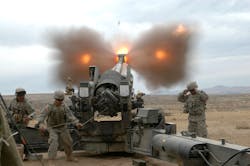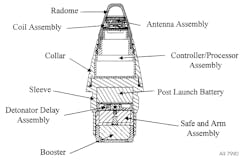Army picks Northrop Grumman for proximity fuze with advanced electronic technologies for artillery shells
ROCK ISLAND ARSENAL, Ill. – U.S. Army artillery experts needed advanced proximity fuzes with state-of-the-art electronic technologies for 105- and 155-millimeter artillery shells. They found their solution from Northrop Grumman Corp.
Officials of the Army Contracting Command at Rock Island Arsenal, Ill., announced $533.9 million contract Wednesday to the Northrop Grumman Allegany Ballistics Laboratory in Rocket Center, W.Va., for M782 multi-option fuzes for artillery.
The M782 Multi-Option Artillery Fuze (MOFA) is for high-explosive fragmentation- and burster-type 105- and 155-millimeter artillery projectiles.
The proximity fuze has four functional modes: variable time, time, point detonating, and delay. The fuze contains an electronic timing system that may be set to function from 0.5 to 199.9 seconds in increments of tenths of a second.
The M782 fuze is remote-set automatically before firing via an inductive communication link like the TM 9-1290-210-12&P M1155 portable inductive fuze setter. The mission data transferred from the setter to the fuze is confirmed by the M1155 fuze setter.
The M782 is the latest fuze artillery design and is compatible with all current 105- and 155-millimeter bursting artillery shells. It employs state-of-the-art advanced electronic technologies, and replaces seven earlier fuzes to simplify logistics and training.
MOFA incorporates a proven legacy safe-and-arm device to maintain required safety and reliability, and can be inductively set in the proximity, point detonating, delay, or time mode. This multi-option capability reduces the number of artillery fuzes the U.S. forces must maintain in inventory, Army officials say.
On this contract, Northrop Grumman will do the work at locations to be determined with each order, and should be finished by July 2027. For more information contact the Northrop Grumman Allegany Ballistics Laboratory online at www.northropgrumman.com, or the Army Contracting Command-Rock Island Arsenal at https://acc.army.mil/contractingcenters/acc_ri.
About the Author
John Keller
Editor-in-Chief
John Keller is the Editor-in-Chief, Military & Aerospace Electronics Magazine--provides extensive coverage and analysis of enabling electronics and optoelectronic technologies in military, space and commercial aviation applications. John has been a member of the Military & Aerospace Electronics staff since 1989 and chief editor since 1995.

